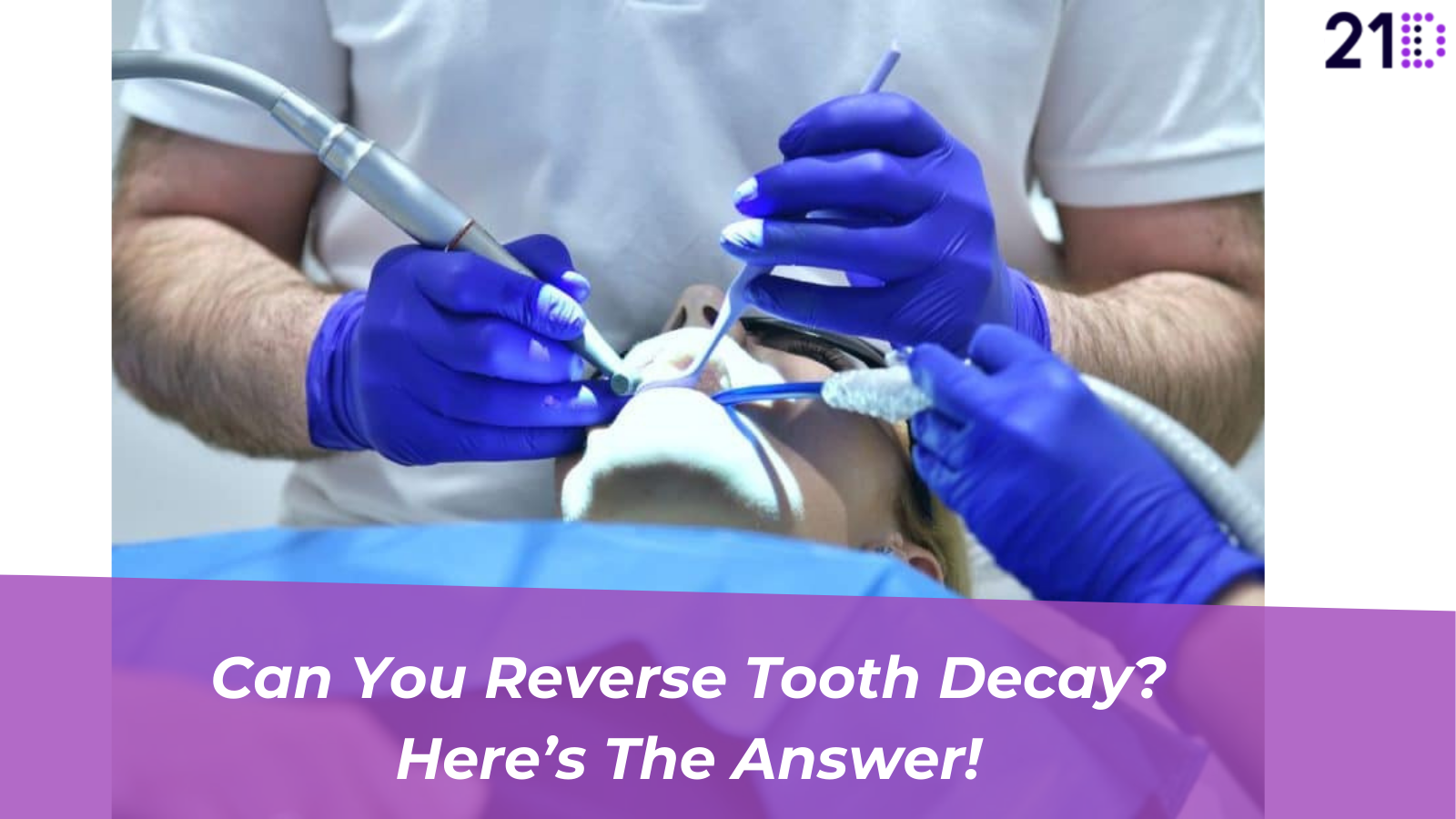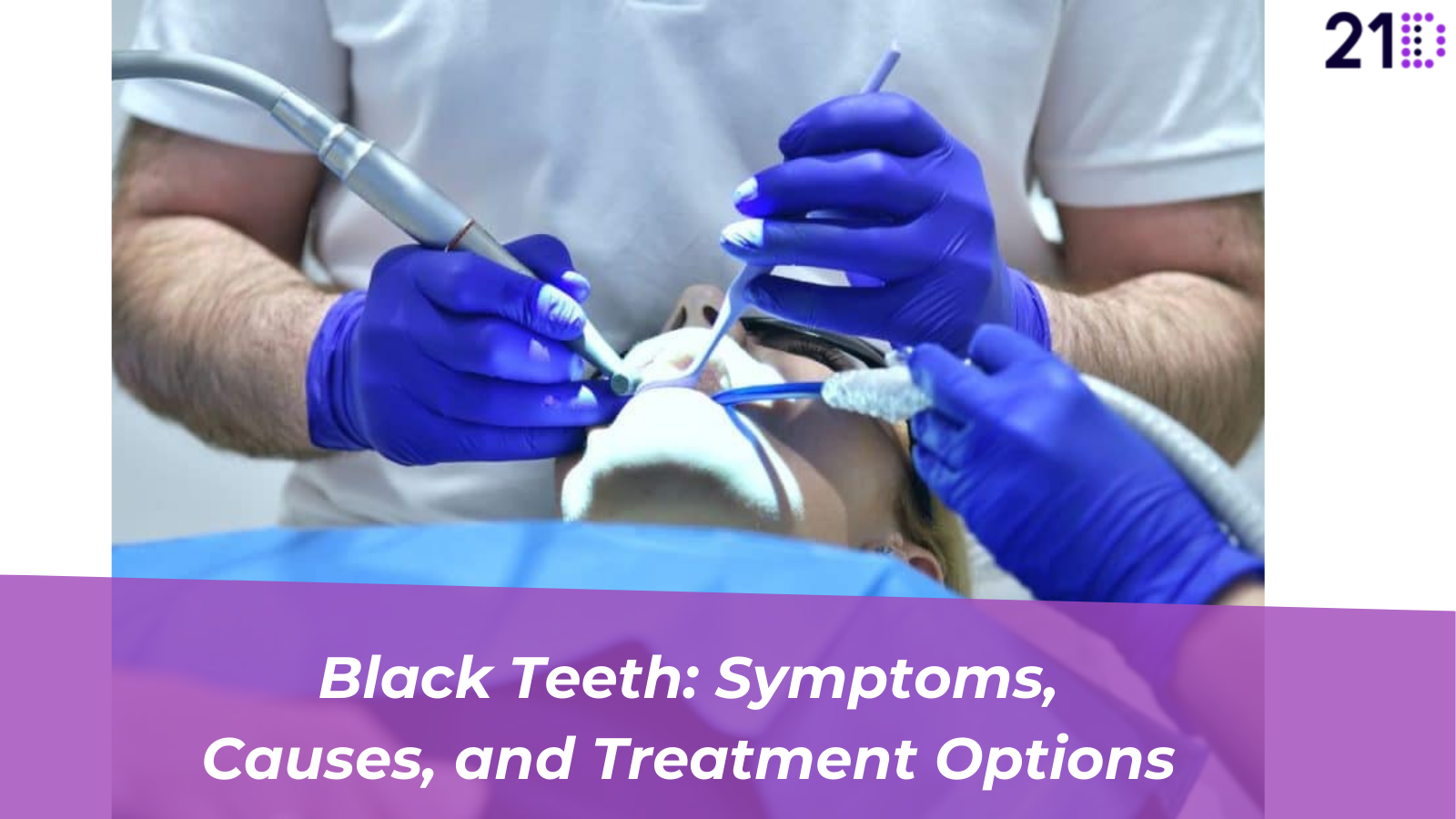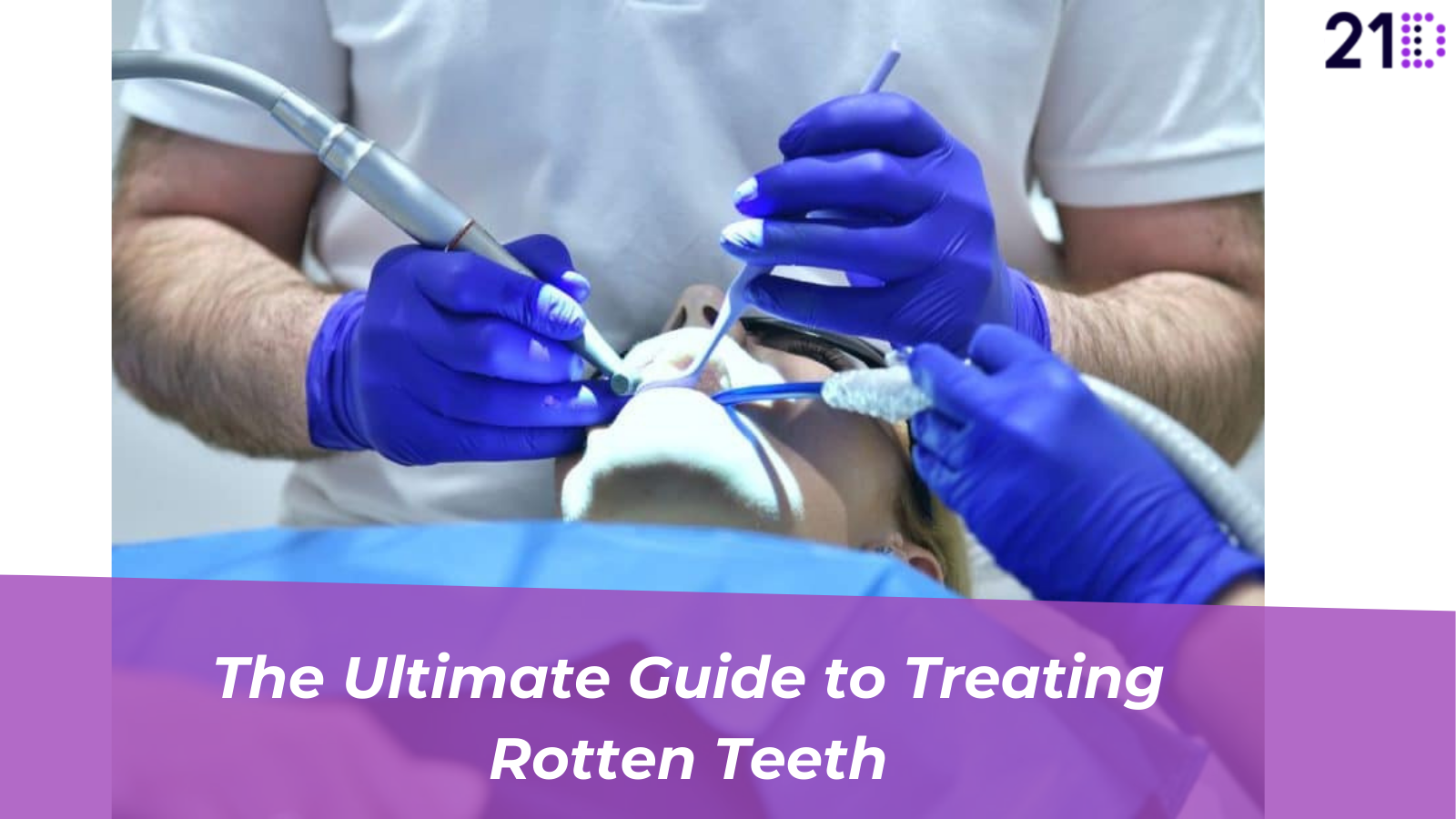Have you experienced a mild sensation within your teeth while consuming something cold or hot? Attention, fellow readers, this can be a symptom of growing tooth decay. According to a study done by the Oral Health Foundation, one out of every three people in the UK has tooth decay. But the question that may venture around people’s minds is, can you reverse tooth decay?
In this blog, we’ll cover the different stages of tooth decay, how to spot early warning signs, and, most importantly, how to fight back and potentially prevent further damage. So, whether you’re curious or a little concerned, keep reading for all the info you need to keep your smile sparkling!
What Is Tooth Decay?
Before we delve into the ways to reverse tooth decay, let’s first understand its concept. Tooth decay, also known as cavities, is essentially tiny holes that form in your teeth. It happens when sugary or starchy foods hang around your mouth too long. These sneaky bits of food become a feast for bacteria that live naturally in your mouth.
As these bacteria munch away, they produce acid. Over time, the acid can erode the minerals in your tooth’s enamel, creating tiny weak spots. If left unchecked, these weak spots can develop into full-blown cavities, causing pain, sensitivity, and even tooth loss in severe cases.
Tooth Decay Stages
Tooth decay doesn’t happen overnight. It’s a gradual process that unfolds in stages, and the good news is that catching it early can make a big difference. Here’s a breakdown of the different stages of tooth decay:
Stage 1: Demineralization
At this stage, the acid produced by bacteria begins to weaken the minerals in your tooth’s enamel. You might not experience pain or sensitivity yet, but a dentist can often spot this during a checkup. The good news? This stage is reversible! With good oral hygiene habits (brushing twice daily, flossing once daily) and potentially a fluoride treatment from your dentist, you can strengthen the enamel and prevent further damage.
Stage 2: Enamel Decay
If demineralisation isn’t addressed, the acid continues attacking, further breaking down the enamel. You might notice white spots or minor brown discolouration on the tooth’s surface. While this stage still doesn’t involve a cavity, seeing a dentist for a filling is crucial. Fillings prevent further decay and restore the structural integrity of your tooth.
Stage 3: Dentin Decay
If the decay isn’t treated in stage 2, it breaches the enamel and reaches the dentin layer beneath. Dentin is softer than enamel and contains tiny nerve endings, so you might start experiencing sensitivity to hot, cold, or sweet foods and drinks. A filling will suffice, but seeing your dentist ASAP is essential to avoid further complications.
Stage 4: Damaged Pulp
If left untreated, tooth decay can progress deeper into the tooth, reaching the pulp where nerves and blood vessels reside. This can cause significant pain, throbbing sensations, and even swelling in the gums. At this point, a simple filling won’t do. You might need a more complex procedure like a root canal to remove the infected pulp and save the tooth.
Stage 5: Abscess Formation
The final and most unpleasant stage occurs if the infection in the pulp spreads to the bone surrounding the tooth. This can lead to a painful abscess, a pus-filled pocket that can cause significant swelling and discomfort. In the worst-case scenario, the tooth might be beyond saving and require extraction.
Reasons For Tooth Decay
Now that you have understood the stages of tooth decay let’s uncover the reasons that lead to tooth decay. Tooth decay results from specific habits and risk factors that create the perfect environment for those cavity-causing bacteria to thrive. Here’s what puts your pearly whites at risk:
Consuming Sugary Foods
Sugary and starchy foods and drinks are the primary ammunition for the bacteria in your mouth. When you consume these, the bacteria produce acid as waste. This acid erodes your tooth enamel, leading to demineralisation and, eventually, cavities. The more frequently you snack on sugary treats or sip sugary drinks, the more acid attacks your teeth have to endure.
Poor Oral Hygiene
Brushing twice daily and flossing once daily are your frontline defences against tooth decay. Brushing removes food particles and plaque buildup while flossing tackles bacteria and debris between teeth. Skipping these habits allows plaque to harden into tartar, creating a shield for bacteria and making it harder to remove harmful substances.
Dry Mouth
Saliva plays a crucial role in maintaining oral health. It washes away food debris, neutralises acids produced by bacteria, and helps remineralise weakened enamel. However, certain medications, medical conditions, or dehydration can lead to dry mouth, reducing these protective benefits and increasing the risk of decay.
Genetics
While good oral hygiene habits are essential, genetics may make some people susceptible to tooth decay. Factors like enamel thickness, mineral content, and even the composition of saliva can be influenced by genes, making some individuals more prone to decay.
Dental Anatomy
Structural irregularities in your teeth, such as deep grooves or overlapping teeth, can trap food particles and bacteria, making certain areas more prone to decay.
Symptoms of Tooth Decay
Tooth decay doesn’t always announce itself with a bang. However, there are definite signs your body throws up as decay progresses. Here’s what to watch out for:
Toothache This is a classic symptom, but it can vary depending on the stage of decay. A dull ache or sharp, throbbing pain might indicate advanced decay reaching the dentin or pulp.
Tooth Sensitivity Does your tooth flinch when you bite on something cold, hot, sweet, or sour? This can be a sign of enamel erosion or decay reaching the dentin.
Visible Damage Watch for white spots, brown stains, or even visible pits or holes in your teeth. These are signs of enamel breakdown and potential cavities.
Bad Breath (Halitosis) While bad breath can have many causes, a persistent unpleasant odour could be a sign of bacteria buildup or an infection from advanced decay.
Pain When Biting If chewing becomes uncomfortable or even painful, it could indicate damage to the tooth structure or an abscess formation.
Can You Reverse Tooth Decay?
Tooth decay can cause pain and irritation. If you’re wondering can tooth decay be reversed, we’ve got you covered. The good news is, yes, you can reverse tooth decay in its early stages! Here’s how:
Catch It Early
The solution to the question of can you reverse tooth decay, is by detecting it in the earliest possible stage. Therefore, the window for reversing tooth decay is during demineralisation, before it progresses into a full-blown cavity. This is why regular dental checkups and good oral hygiene habits are crucial. A dentist can detect early signs of demineralisation and recommend steps to strengthen your enamel.
Maintain A Good Oral Hygiene
Good oral hygiene habits can be of great help in reversing tooth decay. You can do so by:
Brushing Twice Daily with fluoride toothpaste
Flossing Once Daily to remove plaque between teeth
Using A Mouthwash with fluoride (as directed by your dentist)
Maintaining a Healthy Diet low in sugar and starches
You can strengthen your tooth enamel and remineralise weak spots. It halts the decay process and allows your teeth to repair themselves naturally.
Flouride
Fluoride plays a starring role in reversing early decay. It helps remineralise weakened enamel, reversing the damage caused by acid and strengthening your tooth’s natural defence. Here are some ways to get more fluoride:
Fluoridated Toothpaste Brushing twice daily with fluoride toothpaste reintroduces fluoride to your teeth.
Professional Fluoride Treatments Your dentist might recommend a more potent topical fluoride treatment during your checkup.
Diet Adjustments
Limiting sugary and starchy foods and drinks can significantly reduce bacteria’s fuel source. Opt for water over sugary beverages and choose healthier snacks between meals.
However, there’s a catch reversal is no longer an option once decay progresses beyond the demineralisation stage and creates a cavity. At this point, the dentist must perform a root canal or extract the teeth to prevent the cavity from spreading.
This extraction can leave a dent in your natural smile, making you feel less confident in society. Modern-day dentistry has developed a long-lasting solution for dental implant surgeries to overcome this situation.
Tooth Decay and Dental Implant
Dental implants are a fantastic option for replacing missing teeth, offering a long-lasting, natural-looking solution. But what about a tooth with decay? Can a dental implant take its place?
The short answer is yes. But there’s a twist. Dental implants are not the first option for reversing tooth decay. They can be a viable option if the tooth has become non-treatable and needs to be extracted.
Dental implants themselves are not susceptible to tooth decay. They’re made of biocompatible titanium and topped with a porcelain crown, both resistant to the acid erosion caused by bacteria. So, they’re a great alternative to an extracted decayed tooth.
However, the success of a dental implant relies heavily on healthy jawbone tissue. If your tooth is severely decayed, the infection may have spread to the surrounding bone. A healthy jawbone will favour a successful dental implant surgery.
However, if the decay has affected the surrounding bone, healing time and, potentially, bone grafting might be necessary before implant placement.
How Can 21D Help With Dental Implant Solution?
At 21D, we understand the frustration and discomfort that tooth decay can cause. Our team of experienced dental specialists is dedicated to providing top-notch implant dentistry solutions. We leverage cutting-edge technology and implantology expertise to offer patients a revolutionary “Smile in a Day” experience. Here’s how we can help:
Expert Diagnosis and Treatment
Our dentists will thoroughly assess your situation, identify the extent of decay, and recommend the most appropriate dental implant plan.
Advanced Techniques for Decay Removal
We utilise minimally invasive techniques and advanced tools to ensure a comfortable and efficient tooth extraction, minimising discomfort and promoting faster healing.
Focus on Bone Health
If the decay has affected the jawbone, we recommend bone grafting procedures to build up the bone volume and create a strong base for future implant placement.
Holistic Approach to Oral Health
Our team doesn’t just focus on immediate solutions; we emphasise preventive care and education. We’ll equip you with the knowledge and tools to maintain excellent oral hygiene and prevent future decay, promoting long-term dental health.
So book a free consultation with our expert dentists today and regain your decayed smile.
Conclusion
Tooth decay can be a setback, but it doesn’t have to define your smile. But can you reverse tooth decay? You can reverse decay in its early stages by prioritising good oral hygiene, regular checkups, and early intervention. If you’re considering dental implants, addressing decay is crucial for a successful and long-lasting procedure.
At 21D, we’re here to help you every step of the way. From expert decay diagnosis and treatment to advanced implant techniques, our team is dedicated to restoring oral health and confidence. Don’t hesitate to reach out and explore how 21D can help you achieve a smile that shines.




